Mar 19, 2025
Author:Sam Wonder
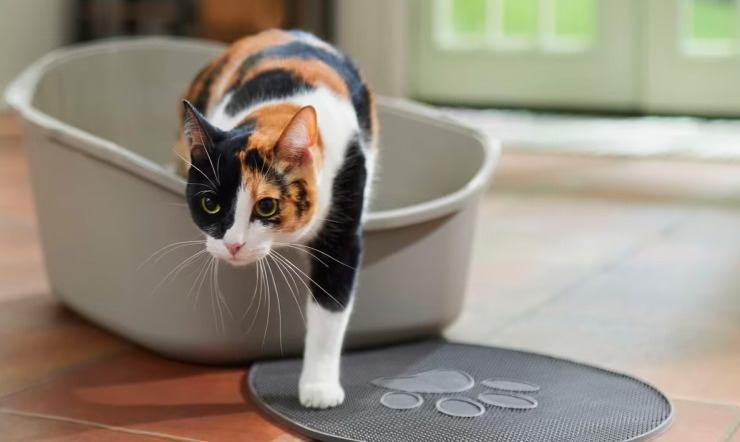
Cat pooping outside of the litter box can be frustrating! Accidents not only make for unpleasant cleanup, but they also often indicate an underlying problem that can affect a cat’s health or happiness.
Many cat owners think that inappropriate behavior in the bathroom is motivated by malice or anger towards the owner(s). Experts are in agreement, however, that cats do not poop outside of their litter box in anger. Cats tend to pee and poop elsewhere for a reason. Learning about these possible reasons can help you solve your cat’s bathroom woes.
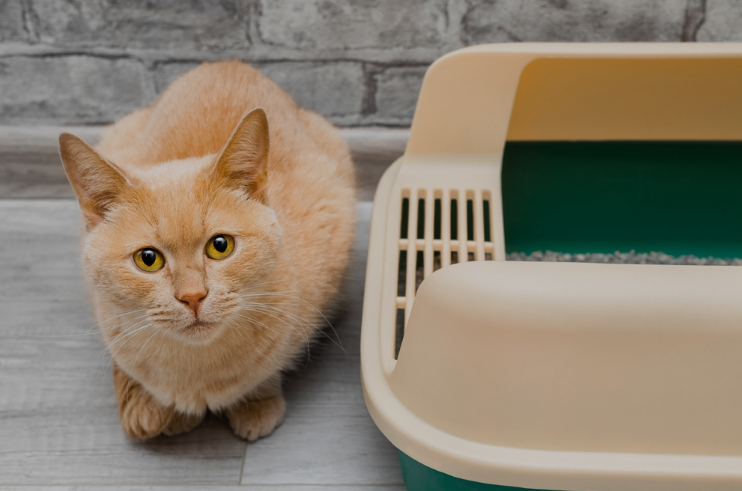
There are several possible explanations for litter box avoidance. Causes range from health problems to behavioral issues to problems with the litter box itself. Identifying what is driving your cat's bathroom behavior is key to stopping accidents around the home.
Several other feline health problems can disrupt appropriate litter box usage. If a cat is in pain, doesn’t like to have to maneuver to reach the litter box, or has bathroom urgency problems, the result is accidents.
There are some common medical conditions associated with litter box issues including:
● Digestive disorders, such as chronic constipation, diarrhea, or inflammatory bowel disease
● Urinary tract infections
● Arthritis, joint pain, or decreased mobility that makes it hard to get in and out of litter boxes
● Urgent bathroom needs caused by overactive thyroid disease
● Increased thirst and urine output due to kidney disease or diabetes
● Nerve functioning and bathroom control: neurological conditions
Consultation with a veterinarian often reveals an underlying medical problem, and in many instances, eliminating outside the litter box is the first signal that the animal has a medical problem. Thus, inappropriate pooping or urinating requires a vet visit for a complete exam. Bloodwork, cultures, x-rays, or ultrasounds — diagnostic tests that help vets identify underlying health conditions that lead to accidents.
Depending on the diagnosis, medications, supplements or prescription cat foods can help manage conditions such as diarrhea or UTIs. Litter boxes with lower sides or cutout entries can make access easier on arthritic cats, for mobility challenges. Controlling medical conditions reduces discomfort and restores normal toilet habits.
Cats are creatures of habit and sensitive to change and they don’t like a drastic change in their lifestyle. There is no clear cause that would prevent the normal use of litter boxes, other than every source of stress or anxiety.
Common triggers include:
● For a new person or pet in your household
● Significant shifts in their routine or environment
● Noise from loud machinery, construction, or a thunderstorm
● Other children or other pets chasing or scaring them
● Fighting with other home cats (in multi-cat environments)
The more anxious or overwhelmed a cat feels, the higher the percentage of accidents. It gives them a feeling of relief.
If you don’t want a fence to be made of the links because of menacing groups, you can set up your home absolutely calm and stable — no radical changes as a way to keep stress-related events in hand.
In multi-cat homes, ensure each cat has separate food bowls, litter boxes, scratching posts, beds, and playtime, to prevent resource tension. Synthetic pheromone diffusers, such as Feliway, may also help induce relaxation.
Sometimes the litter box itself deters cats from proper bathroom habits. If boxes are too small, hard to access, contain unappealing litter, or aren't cleaned frequently, cats look for alternatives.
Common litter box issues include:
Size and Accessibility
Cats need adequately sized litter boxes where they can comfortably turn around and dig. Senior cats or kittens may struggle with boxes with high sides. Ensure the box opening and interior space meet your cat's needs.
Litter Preferences
While clay litter is highly absorbent, some cats dislike the texture or dust. Grain, pine, and crystal litters vary in absorbency and texture. Cats may reject a new litter type if the change is too abrupt. Slowly mix in new litter to ease the transition.
Cleanliness
Cats have a stronger sense of smell than humans. Even one soiled clump left too long turns cats off to using the litter box. Scoop waste from boxes twice per day. Dump everything, wash, and refill with fresh litter weekly.
Location
Cats want privacy yet also visibility of approaching pets or people. Boxes in high-traffic, noisy areas get rejected for being too exposed. But hidden back rooms could leave a cat feeling cornered. Balance accessibility and discretion.
Number of Litter Boxes
The standard guideline is one litter box per cat, plus an extra. Multi-cat homes with just one box invite conflict. More boxes in different spots prevent issues.
Adjusting litter box type, placement, and cleaning routines may be necessary to accommodate finicky cats. Pay attention to your cat's signals to identify factors driving them away from the litter box.
Sometimes medical and litter box issues are ruled out, yet cats continue soiling areas around the home. In these cases, behavioral problems or territorial marking are often the cause.
Territorial marking involves cats spraying or pooping around the home to communicate information and mark ownership of a space. It often results from perceived threats from outdoor cats straying near windows. But new cats or visitors to the home can also trigger territorial marking.
Cats who experienced early trauma like abandonment may develop lasting bathroom problems. Past negatives shape some cats to associate litter boxes with danger - making them too fearful to use boxes properly.
Bored, under-stimulated cats also act out with inappropriate elimination. Seeking attention or outlets for their energy, 'bathroom misbehavior' generates owner reactions.
Stopping behavioral and territorial issues involves addressing root causes of stress and providing adequate playtime outlets. In extreme cases, medication can reduce anxiety while behavior training helps shift bathroom habits. Identifying and accommodating behavioral motivations is key.

If your cat has begun pooping around the house, here are ways to tackle the issue through medical treatment, litter box optimization, and positive reinforcement training techniques.
The first step when cats have bathroom accidents is a complete veterinary workup to identify any underlying medical cause.
Schedule an exam if your cat shows any of these symptoms:
● Straining or signs of pain when pooping or peeing
● Urinating frequently in small amounts
● Blood in urine or stool
● Sudden increased thirst or changes in appetite
● Vomiting or diarrhea
To check for issues like UTIs, kidney disease, diabetes, and thyroid disorders, vets run urine and blood tests. They may also recommend X-rays, ultrasounds, or other imaging.
Based on the results, vets can prescribe medications, and therapeutic foods or suggest environmental changes to help resolve medical conditions contributing to the problem. As an example, cats with arthritis may receive joint supplements and have their litter boxes adjusted to be more accessible.
To minimize everyday stress for cats:
● Maintain consistent feeding times, play routines and household rules
● Make gradual introductions to new family members and pets
● Provide hiding spots and vertical space to climb where cats can observe household activities without feeling overwhelmed
● Use synthetic pheromone plugins and sprays designed to calm cat anxiety
The more stability and predictability in a cat's daily life, the lower their general stress levels will be. This prevents anxiety-related bathroom accidents.
A tip to save stress and create a good routine is to feed your cat at the same times every day. An automatic feeder such as the WOpet Pioneer Automatic Pet Feedercan help ensure you maintain consistency when your schedule makes it difficult.
Through portion control and scheduled feedings, it helps ensure your cat always gets their meals on time — and it relieves them of all that anxiety about whether or not you’ll be home when they’re supposed to eat, while also keeping their routine reasonably predictable. One that is well-fed and free from stress is less likely to develop behavior issues that lead to litter box avoidance.
Providing predictability in daily rhythms also helps, as does feeding appropriately, but generally, any accidents from stress can be avoided by keeping a quiet and cozy environment. Addressing routine stability, litter box setup and other stressors in your cat’s environment establishes the best in conditions for good bathroom behavior.
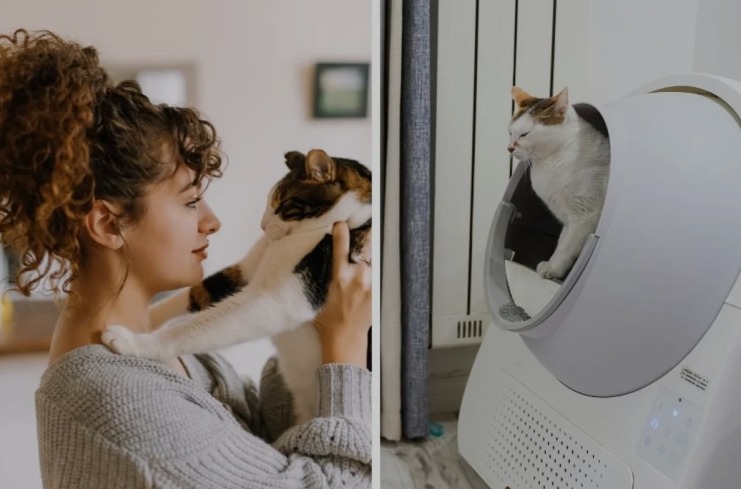
Self-cleaning and automatic litter boxes offer convenience, more frequent waste removal, and better odor control. But some cats hesitate to use them. Here’s guidance on transitioning cats to auto boxes successfully.
Automatic litter boxes utilize motion sensors to activate mechanical rakes clearing waste a few minutes after each use. Models with extra features also wash and dry the litter.
Benefits include:
● Keeping litter cleaner between full changes.
● Controlling odors better through faster waste removal.
● Added convenience - less frequent scooping needed.
However, the motors and mechanics can intimidate some cats at first. Extra steps may be needed to get cats comfortable with automatic boxes.
Place the new automatic litter box right next to your old one without removing the previous box. This allows your cat to check out the new box without feeling forced into it as their only option. Over several weeks, move the old box slightly further away to encourage the use of the auto box.
When introducing an automatic litter box, avoid changing brands or textures of litter at the same time. Keeping the litter feel consistent prevents dual shock factors of a new box style new litter. Make any litter adjustments weeks later after acclimation to the automatic box itself.
To allow inspection without fear, leave the automatic features turned off at first. This prevents the motor from suddenly activating and startling your cat the first few times entering. Once the box becomes familiar territory, activate the self-cleaning.
Entice your cat into the automatic litter box using treats, catnip, or praise. Create positive experiences to override any initial hesitancy towards the box. As your cat reliably uses it, continue rewarding to cement the behavior.
Pay attention to how your cat responds as the automatic functions activate. If signs of distress like hiding or acting fearful crop up, turn features off temporarily. Or try adjusting motion sensor time delays. Reintroduce auto settings more gradually as needed. Also, rule out factors like box size or cleanliness issues causing avoidance.
Cats pooping out of the box can be a messy and frustrating problem for feline parents. Inappropriate bathroom habits, however, almost always have logical explanations. Some common explanations for such behavior are medical conditions, litter box issues, stress, territorial marking, or behavior issues.
So if you get to the bottom of the initial trigger through vet appointments, a better understanding of what’s become your cat’s routine after years in the family, and you optimize the conditions in the litter box, you can tackle the accidents and disruptions around the house. Always Train with Positive Reinforcement and Reward over Punishment.
Cats will need to be transitioned slowly to any automatic litter box, and there's a bit of a learning curve with switching over.
Popular Post

What to Feed a Sick Dog With No Appetite? [2025 Guide]
May 16, 2023
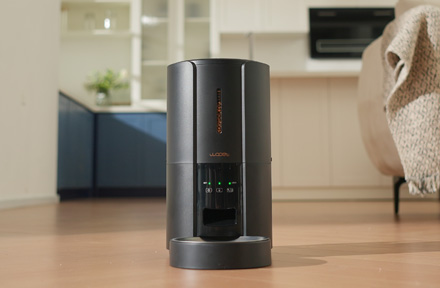
Troubleshooting Common Issues with Automatic Pet Feeders: Tips & Tricks for Pet Owners
Oct 26, 2023
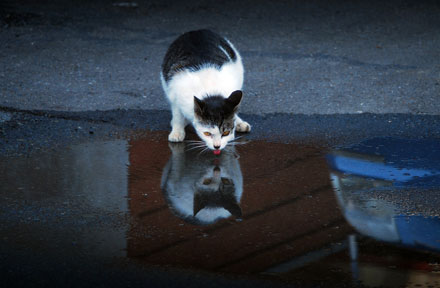
Why Does My Cat Cough After Drinking Water? 8 Potential Reasons
Mar 13, 2023
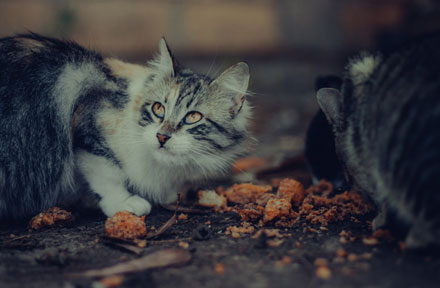
My Cat Only Eats A Little at A Time - What to Do?
Feb 27, 2023

Why Is My Dog Being Destructive All of A Sudden?
Feb 04, 2023
$99.99
$129.99
Copyright © 2025 WOPET. All Rights Reserved.